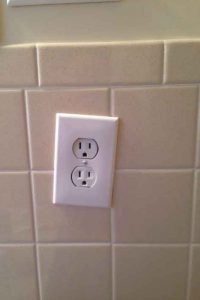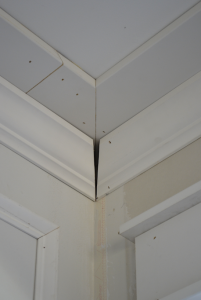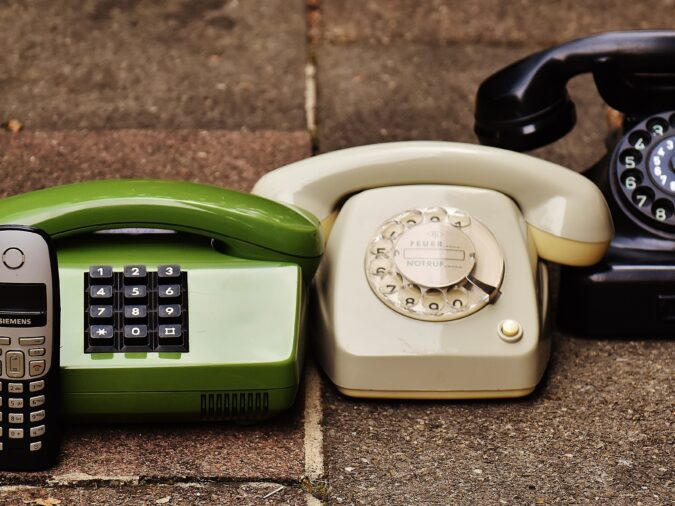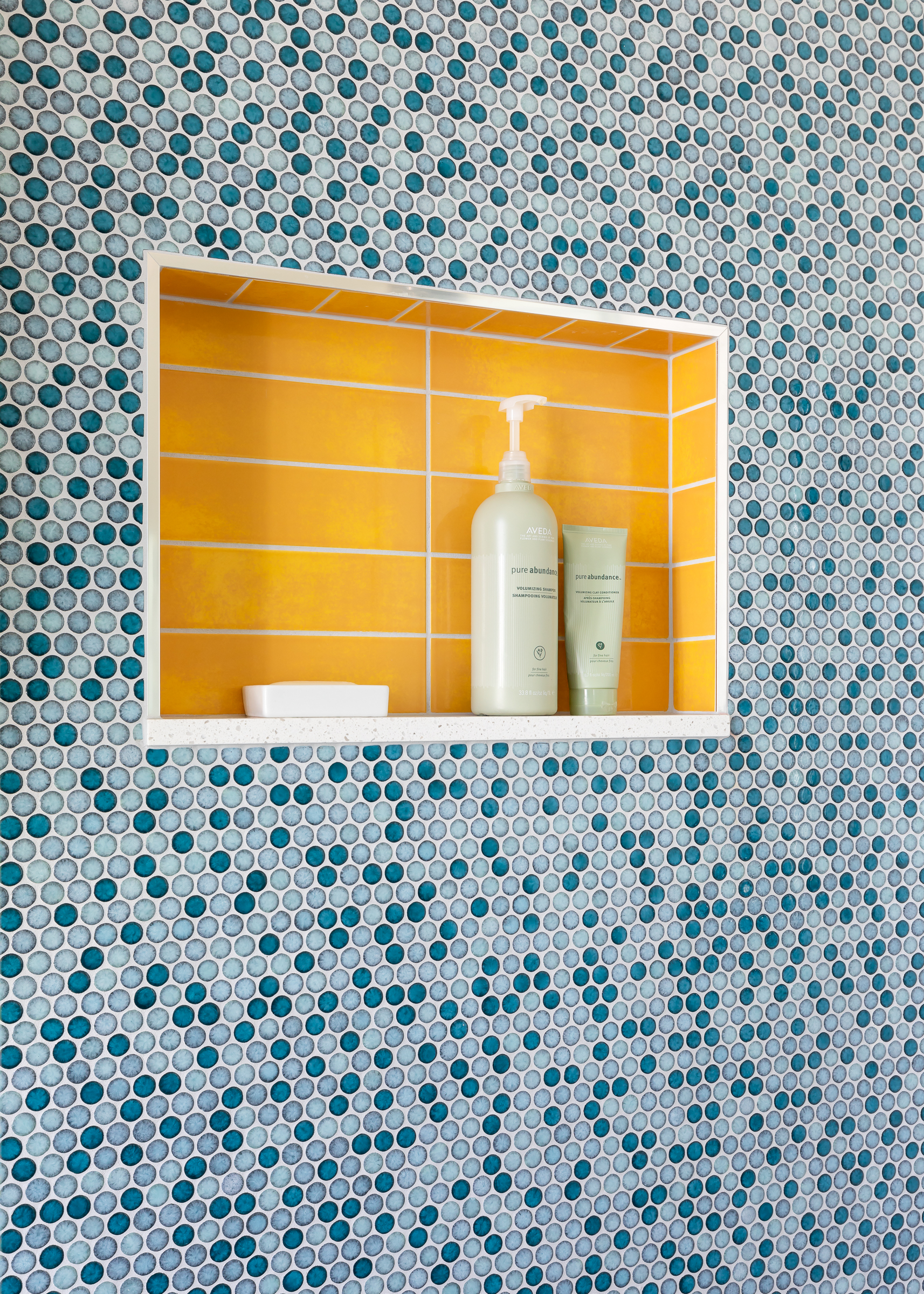What does a kitchen or bath remodel cost anyway?
What does a kitchen or bath remodel cost anyway?

Eager to get happy at home right now?
Get 10 tips for a happier home!
It’s the big question, right? You’re dreaming of a new kitchen or bathroom remodel, and you want to know what it is going to cost you. Let’s get you some answers to what the remodel cost will be. (BTW, this is a looooong post. Click here to skip to the numbers.)

Before we begin, let me point out that the costs I am talking about here are for the Seattle metro area. Things are kind of spendy here. (A modest 2500 sf home can set you back $750K. That’s three-quarters of a MILLION dollars!) Since it’s an expensive market, the costs here may be more than what you’d pay in another state. Or even in another part of Washington. And that’s before you account for the 10% sales tax you have to figure in on top of any of the actual materials and labor costs.
Even here in Seattle costs have been skyrocketing, especially in tile installation. Just the labor for your kitchen backsplash can set you back $1,500-$2,000. (And you still have to factor in the cost of tile itself). Installing tile around a simple bath/shower combo can cost you $2,500-$3,500 in labor. Boosting the shower size and fancy-factor and the tile installation costs for your master shower with shampoo niches and decorative tile can take up $5K-$10K of your budget, depending on tile design/layout. (ouch!).
Can you do all this stuff more cheaply? Of course! You can make your goals more modest and update your space for just $100 like this gal. Or you can hire a guy off Craigslist and save a ba-jillion dollars. He may or may not be a good tile installer, and he may or may not be licensed, but you might get a great deal. Life is full of choices. We’re here to talk about what a more “standard” remodel might cost, with experienced professionals on your team.
Variables
Obviously, there is a HUGE range of possible costs for your remodel. Here are the two main things that will affect your final price:
1) Materials
What are your remodel dreams? If you’re like most folks, you’re probably picturing stone or quartz counters, tile showers and backsplashes, tile or wood floors, and new cabinets with plywood box construction. Those are spendier choices than laminate counters, vinyl floors, and Ikea cabinets. So they are going to increase your costs right out of the gate.
And they’ll add up. The difference between this $1.50 bronze Amerock cabinet pull and this $19 bronze Emtek pull is only $12. (And a whole lot of style). But, in a kitchen, you can easily need thirty of them, and suddenly that’s a $380 dollar difference. The difference between this $265 chrome Delta kitchen faucet and this $1120 chrome Rohl faucet is $850. And you might say “yah, but does $380, or even $850, really matter in the scheme of a $75,000 remodel?” Maybe not. But make a “little choice” like that ten times, and you just added thousands of dollars to your cost. And if your kitchen remodel budget is in the $50K range, these little choices will make a BIG difference!
This is the area where you have a lot of control because, while you can’t really control market costs for installing your tile, you *can* choose tile that is less costly (like this mother of pearl $25/sf mosaic instead of this $125/sf marble and mother of pearl mosaic or this $380/sf – yes per. square. foot. marble mosaic – OUCH!). BONUS – it usually costs less to install less costly tile (more on that later).
Of course, where you’ll really feel it is in the cabinets. It’s common to drop $25K (or more) on just your KITCHEN cabinets ALONE! The owner of this tiny, adorable 8’x10′ kitchen got three different quotes on cabinet pricing. With Columbia she’d have paid about $7500 for painted wood shaker cabinets. With Aristokraft, she’d have paid $6000 (about 20% less) for a laminate – not painted wood – shaker cabinet. And with KT Cabinets (painted wood shaker cabinets from a local Chinese importer) she’d have paid about $3500. There are pros and cons to the various cabinet companies and lines which I’ll go into {in a future post}, but for now the point is that even in this tiny kitchen your choice of cabinets (and other materials) have a huge influence on final costs.
When it comes to being smart about your materials this is also where working with a designer *can* be helpful. Because a good design can help make inexpensive materials look really great. (Choose the right designer – sadly some folks in my industry do have a reputation for ignoring your budget and choosing things that are unnecessarily high-end and expensive. But there are LOTS of designers who will honor your budget and make it go as far as possible with great results.)
The second main thing that will have a huge impact on your remodel costs is the labor, ie, what you’ll pay your contractors.
2) LABOR Let’s look at the five big things that’ll affect what you’ll pay in labor costs.
#1 – materials matter
Imagine you’re eating out. If your waiter brings you a $2500 bottle of Dom Perignon White Gold champagne **and drops it on the floor** it’s going to cost the restaurant a lot more than if he tripped and dropped your $4 bottle of Budweiser. Likewise, if your contractor breaks your one-of-a-kind marble stone slab it’s going to affect her margins way more than if she mis-cuts your 2 cm quartz from Ikea. So, you’ll pay more for installing a complicated design (like a tile mosaic, or a wood floor in a herringbone pattern), **and also** for installing more expensive materials. Yep, if you’ve got champagne taste, you’ll get dinged twice for that.
#2 – size matters
You’ve got to choose the right-sized contractor for your project. A talented craftsman with just a set of tools and a pickup truck who’s just getting started is likely to cost less per hour than an experienced crew with a full time staff of ten and a showroom. On the other hand, with their dedicated team, a larger or more experienced company may get the project done faster. And manage the job better, and provide you with better budget tracking than a solo guy who has to find and hire a bunch of independent subs. There are times to hire both, depending on your project.
The larger company is likely more suited to larger projects, like adding a second level to your house, or gutting and remodeling the entire main floor of your home, running new gas lines, and moving walls around. On the other hand, if you’re scope is limited to just making over your single bathroom, a guy-with-a-truck might be a great fit.
That said, you still want to have someone who communicates well, and who will give you a proper estimate for the job. An inexperienced contractor may have trouble bidding the job accurately. So they’ll either surprise you with extra bills later, or you’ll pay them hourly, which can add up to a higher cost than they originally promised. Also, be careful with a jack-of-all-trades. Just because a guy says he can do it all, doesn’t mean he will do it well. This is especially true for tile, sheet rocking, finish woodworking (like installing crown molding), and painting. There is an art to those skills! And when it’s done poorly… oh man does it look bad! Having to re-do it adds time, money, and stress to the project.
Most important, remember, when it comes to construction Time is money! Going smaller won’t save you money if the team is so small that it doubles or triples the time it takes to do your project. Besides, do you really want to live in a construction zone for any longer than you have to? Sometimes it’s worth a bit more upfront to make the whole project go faster (and, hopefully, smoother). If you choose a less experienced team, just be prepared to step in yourself to ensure excellent organization and communication. Without it, you risk schedule overruns and confusion throughout the project. {check out this post on hiring a great GC}
You might get lucky but, in general, expecting a high level of service at a low cost is unrealistic. As the saying goes, you can only pick two: good, fast, or cheap.
#3 – personal ocd levels

That’s a ridiculously crooked outlet!
Everyone has their own threshold for perfection. Some people can handle having a crooked tile or uneven grout lines! And some people will never unsee those imperfections. Here’s a quick list of things that might drive you crazy from a less detail-oriented contractor:
- crooked outlets
- outlet holes that were cut bigger than the outlet cover
- outlets over your counter that aren’t all at the same height
- one crooked tile in a row of straight tile
- uneven grout lines
- chips in the edges of cut tile
- messy caulking jobs
- using caulk to fill in big gaps in wood, tile… everywhere
- bad seams in crown molding
- bad, chunky, uneven wall texture
- poor paint jobs (messy lines where it meets another color, or not enough coats of paint)
- uneven seams in your stone counters
- sinks that aren’t centered in your sink cabinet or under your window
- light fixtures that aren’t centered over your sink
- uneven thresholds between flooring levels (sometimes this can’t be avoided, but it can still be handled well, or poorly)
- cabinet handles that are crooked or not installed evenly
- cabinets that don’t have equal gaps between drawers and doors faces

I’m guessing the contractor said “I’ll just caulk it.” Sigh.
Do NOT settle for less perfection and craftsmanship than you can live with. Because if you spend $20 grand and hate the job, but could have spent $25 grand to get what you needed, you’d have forgotten about that extra $5K over time. But you may not forget about that stupid crooked tile right in the middle of your backsplash, staring at you every time you cook.
On the other hand, there is no need to overbuild, either. You probably aren’t building the Taj Mahal. And you have to price your job according to your market and the resale value of your home. In the end, time is money, so if you want your contractor to go at a speed that lets them be careful with the details, know that that will cost a bit more.
A quick education on what you can expect from a good contractor will help you have a more effective conversation with your team and make sure you are all on the same page. Go to a bunch of open houses in your area and start paying attention to how perfect (or not) grout lines are in the tile work. Whether the floor thresholds are smooth from one floor to another. How easily the drawers glide on the kitchen cabinets. How perfect the seams are on the crown or base molding. Sneak pictures of things you love (like a perfectly done tile niche) or hate (light a light fixture not centered over a sink) and share those with your GC. Talking about these things up front will save you a lot of headaches, stress, and misunderstandings down the road.
Honestly, most good subcontractors can perform at a high level when asked to, but the quality of finish needs to be discussed at the start of the project so they can make sure the bid allows enough time for the caliber of work you want. The difference between a good paint job and a great paint job is about three extra days of sanding and prep *before* any of the actual painting takes place. If that’s important to you, just make sure they have that extra prep work in their bid from the beginning. That way you’ll avoid unpleasant surprises and the frustration that comes from poor communication.
#4 – What about DIY? Or “helping”? Or salvaging?
Contractors get a lot of questions about how the homeowner can help. Either because they want to be involved (it sounds fun) or, more often, want to save money. Will it actually help you save money?
DIY: Doing your own demo, or your own painting, or ordering your own materials can save you money…sort of.
The problem with DIY is that it often derails the timeline, and time really does equal money in a remodel. If you promise your contractor that you’ll do the painting, and you miss your deadlines, then you’ve just set back all the other finish work. And you might find that you’ve created a several week (or in some cases, a several month) delay because those subs had to go off to their other projects. They aren’t going to stand around waiting for you to finish if they have other deadlines and commitments. You’ll have to stand in line and wait till your turn comes around again.
Another DIY option is ordering all the materials yourself. That saves you the mark up (there is no industry standard for the mark up, so it can be as little as 10% and as much as 40%) which can add up to real money. But there are two problems to consider:
First, the reason there is a mark up on materials is not so the contractor can feed his kids. What is he charges for labor is what pays his bills with. No, the markup is to cover hassle. Because it’s not so much the ordering of materials that you are paying for with that markup – it’s all the handling of all the materials and the inevitable issues that will come up. The wrong tile came in, or not enough tile, or it came in broken. The faucets showed up in the wrong finish, or they forgot to include the valve. The cabinets came in but they built two of them the wrong size, and one came in with the side cracked.
Someone has to order things well-enough ahead of time so that they are onsite when needed, check things as they come in, deal with those headaches (ideally fast enough to avoid project delays), and make sure they don’t get lost or broken in the middle of a chaotic work site. That is what your mark up pays for. So if you are going to order your own materials, please know that you are also going to be responsible for all that management, too.
Second, when the client orders the materials, things get complicated when products fail. If you ordered the faucet, and the faucet leaks, who’s responsible? Should the plumber replace it? Maybe you cover the cost of the new faucet (or deal with the company about the warrantee). But who’s going to pay the plumber for reinstalling the new one? When the contractor orders and installs the item, usually they will warranty both the item and the installation, so things are clearer a year down the road if there are any issues.
I’ve found that most of the contractors I’ve talked with say that if you want to DIY, the two best places for it are demolition (since that is done ahead of the contractor showing up) and ordering things like light fixtures, sink, and cabinet handles – things that aren’t mechanical or going to be buried inside a wall.
If you have your heart set on DIYing part of your project, then do it! Just make sure you choose a contractor who is happy to work with you on that (you don’t need a frustrated GC) and be honest with your timeline and work schedule (maybe even taking a few days off) so you don’t sabotage your own project. It’s up to you if you want to spend your vacation time that way! Or, if the money you’d earn instead should just be handed to the contractor to save you the stress and hassle, and make sure the job is done professionally in the first place.
Salvaging: Yes, it definitely can help the planet. If you reuse your cabinets, or refurbish those vintage windows, or rescue and install a vintage clawfoot tub, you will be keeping those items out of a landfill. Plus you’ll be keeping that irreplaceable vintage charm. That’s great! But….
Salvaging something means your contractor has to be careful during demo, and usually means they have to get creative. They’ll probably have to refinish the item (takes a lot of time and labor), and/or reconfigure the thing (takes a lot of time and labor). Either way, while *sometimes* the cost of the labor it takes to refinish and reconfigure is less than the cost of just buying it all new, oftentimes it is actually more expensive. (You’ve probably noticed theme here: time = money!) So, generally, I recommend keeping and working with something only if 1) you love it, 2) it’s vintage and irreplaceable, 3) the amount of work to keep it won’t bust your budget, and 4) (important) you hire a contractor who *likes* to work with salvaged materials. Many contractors are impatient and don’t do well saving and reusing. Others love that challenge – so hire accordingly. But really, don’t do it to save money.
#5 – hiring a GC vs hiring your subs directly
The choice between hiring a general contractor who will manage your whole project, or hiring your subs (like the plumber, tiler, electrician, painter, granite fabricator, etc) directly comes down to a choice between your time & stress vs your money. Hiring a GC will cost you more because you are hiring someone to handle all communication and subs. Your General Contractor’s job is to make sure the project is executed according to plan, efficiently, and on budget, with as much communication and as little stress as possible. Are all GCs good at that? NO. So yes, who you hire will matter beyond how well they can install a cabinet or paint a wall. {Here’s another link to that post on hiring a great GC.}
a great GC will save you so much time and stress that they are worth every penny you pay them. But if you don’t have a budget that will allow for a good GC, then being your own project manager is probably smarter and less stressful than hiring a bad GC. Just be prepared to vet your own subs, do a lot of communicating (it can be like herding cats), handle problems that arise (this is not a good fit if you like to run away from conflict), and can dedicate the time to the project. Just know it’ll be like having a full time job on top of your full time job.
(Quick note – even if you hire a great GC, plan to walk through your project regularly, and ask questions. Just because they are the manager, *you* are the owner, and in the end the success of this project still requires you to be involved.)
When should you chat with/Hire your contractor? While it’s okay to have a quick chat with a contractor before you get started planning your kitchen, and you can talk through your idea to see if it’s a $50,000 or a $500,000 idea, please don’t ask them for a real quote until you have a plan. There are too many variables for them to give you real numbers. So, before you do anything, PLAN PLAN PLAN. Once you have a working layout and a real sense of your materials, then a contractor can give you a real estimate of both labor costs and timelines. This also gives you something concrete to hand to a couple different contractors. So you can get apples-to-apples comparisons of costs, timelines, communication styles, and response times. Does that mean you might spend some time and money on a design you don’t end up executing? Maybe. But if you have the preliminary chat with your contractor about “how many zeros are we walking about” and if you read articles like this, hopefully you’re working with a realistic budget from the start.
$$$ Bottom-line $$$
Okay, so what does that all add up to? Now that I’ve made sure you understand that there are a LOT of variables in the costs, here’s a basic pricing guide based on what I’ve been seeing in the market, what my clients have spent, and what my contractors tell me:
$$ Common costs for a complete bathroom remodel in Seattle
– It’ll probably cost you anywhere from 30-65K (25 to 35K for a full gut and remodel of a small tub-toilet-and-vanity guest bath, and 45K to 65K for a master bath with high end finishes, with the top end price for a 2 sink vanity, custom shower, free standing tub, and most likely heated floors)
– It’ll be hard to get in under $25K if you are hiring out the whole job
What if you only have $15,000?
– CONTROL YOUR EXPECTATIONS: This is typically not a full gut and re-do for 15K. So plan for a cosmetic remodel and don’t move any of the plumbing or light fixtures.
– Control your materials: consider off-the-shelf/readymade cabinetry, vinyl floors, an acrylic pan or shower/tub combo instead of a separate tub and shower, no shampoo niches in the shower, and uncomplicated tile design (think larger format 12×24 tile), and a shower curtain instead of glass doors. You can still get a GREAT looking bathroom with these choices because you still have complete control over the colors, textures, and layouts!
– Control your labor costs: consider hiring your subs directly (like your tiler, plumber, electrician, and granite fabricator), avoid changing the layout of your bathroom, hire the right size company (a small team instead of a giant company with a lot of overhead), DIY part of the project, and gut-check your need for perfection.
$$ Common costs for a complete KITCHEN remodel in Seattle
– It’ll probably cost you anywhere from 65-100K and up. (some of my contractors say 70K and up) This price range typically includes full demo to the studs, new plumbing and wiring, opening up a wall to the dining, semi-custom cabinets and quartz counters with a tile backsplash. Remember, too, that appliance packages can vary a lot in cost. Some contractors leave them out of the budget and have the homeowners manage that directly. Make sure you know if the bid includes appliances or not.)
– It’ll be hard to get in under $50,000 if you are hiring out the whole job
What if you only have $30,000?
– CONTROL YOUR EXPECTATIONS: Keeping within this budget will mean not changing any wall layouts or windows, and keeping a lot of the existing plumbing and electrical.
– Control your materials: consider imported, readymade, or assemble-yourself cabinetry, or look into refacing, instead of replacing your cabinets. Look at vinyl floors, laminate counters (with a drop-in sink) or 2 cm thick quartz instead of 3 cm quartz. You can still get a GREAT-looking kitchen with these choices. Because you still have complete control over the colors, textures, and layouts!
– Control your labor costs: consider hiring your subs directly (like your tiler, plumber, electrician, and granite fabricator), avoid changing the layout of your kitchen, hire the right size company (a small team instead of a giant company with a lot of overhead), DIY the demolition, and gut-check your need for perfection.
my favorite cost-saving tip:
Whether you hire our team to help, work with another designer, or do-it-yourself, PLAN PLAN PLAN. Don’t lift a sledgehammer to demo your kitchen until you have a design plan that covers everything from layout to lighting to cabinet knobs and pulls. I promise this will save you SO MUCH TIME, MONEY, AND STRESS! {Check back for a future post with sample checklists for your kitchen and bath remodels – just in case your contractor doesn’t provide one}
Advice from a couple of my favorite contractors:
A *big thanks* to Woodcrafters Construction for their thoughtful contributions to this post. Travis’ tips are sprinkled throughout the above post – here’s one of my favorites because it helps you avoid a nasty surprise:
💡”Remember that appliance packages can vary a lot in cost. Some contractors leave them out of the budget and have the homeowners manage that directly. Make sure you know if the bid includes appliances or not.”
Another big thanks to Palmer ResidentiaL – a recent thoughtful conversation with Ron and Micheline actually inspired this epic post and, like Travis, they helped with the content. From the fine folks at Palmer who run the tightest project management ship I’ve ever seen:
💡“Educate yourself on competitive market costs for your specific project in the Seattle metro area. Then interview and obtain detailed itemized costing from highly reputable contractors (no more than 3 is necessary). The final cost at the end of the project will be determined by the detail of the project plan, design, and contract scope of work before the project starts. A detailed design and contract ensures better communication of what is being sold (contractor) and bought (client). Every highly reputable contractor will know the importance of this level of communication.”
Here are some other fantastic tips from two other fantastic remodelers:
💡 Mighty House Construction: (consider calling these folks if you want to work with salvaged materials) 😀
“We hate being the buzzkill of exciting project ideas! Get your designer and builder teams together early so that reality and creativity merge seamlessly.
And remember, planning and making all your decisions up front is the key to reduced stress and cost clarity.“
💡 THE Creative CraftsmeN: (check out their gallery for the awesome secret bookcase they built to hide a storage area – love creative stuff like that!)
“Be prepared for a few surprises. Even the best contractors can not foresee all possible obstacles. For example uncovering hidden water damage, or DIY electrical/plumbing that is not up to building codes and could be a fire/flood hazard. If you start your remodel expecting a few slight bumps, when/if they do occur the stress will be minimal. And if you have chosen a good contractor they will easily smooth out these bumps for you and keep your job on schedule.“
(and speaking of choosing a good contractor or subcontractor…)
“The lowest estimate is not always going to be the best option. Ask for references and contact them. If possible arrange to visit finished jobs to see their work for yourself. Choose a (sub)contractor with a good history of return customers. Choose reliable and knowledgeable craftsmen and get the job done right the first time. They may not offer the lowest price upfront. But they are priceless when compared to the amount of damage that can be done by shoddy workmanship.“
I hope that helps! It’s a pretty big undertaking when you tackle a remodel, but the payoff can be huge. Done right you end up with a home that works better for you and your family, adds value to your investment, and creates a warm and inviting space for you to wake up to every day. Ready to talk through design ideas ahead of your remodel? We’d love to meet with you virtually in a Design Helpline!
May your home always be happy!


HI, I'M REBECCA WEST!
I’m an interior designer, author, podcaster, speaker, and coach to other designers. (Whew!) But I’m not your classic interior designer because, frankly, I don’t care if you buy a new sofa. I do care if your home supports your goals and feels like “you.” Remember, happy starts at home!
More From Seriously Happy Homes
Are you ready for a seriously happy home?
(Cue the confetti!)

Eager to get happy at home right now?




